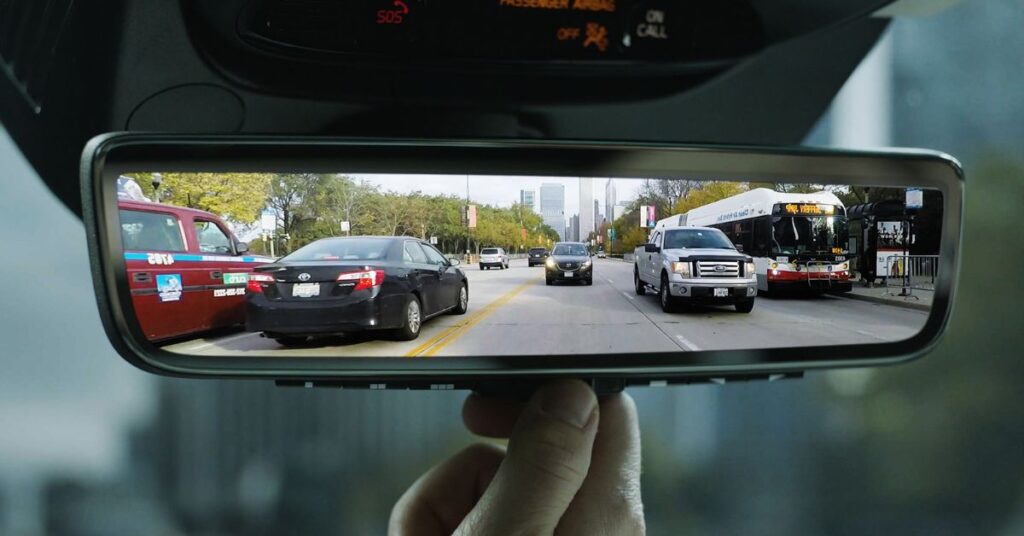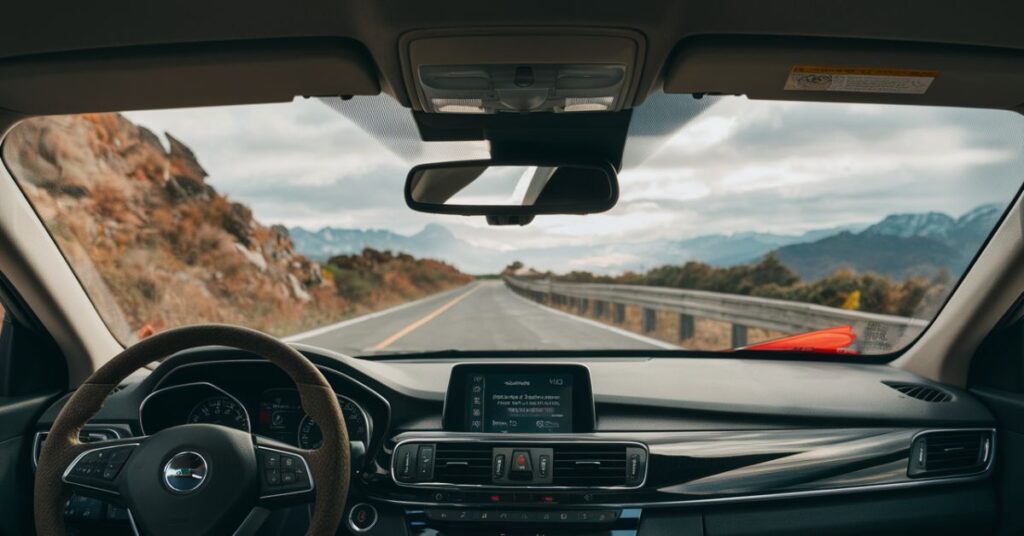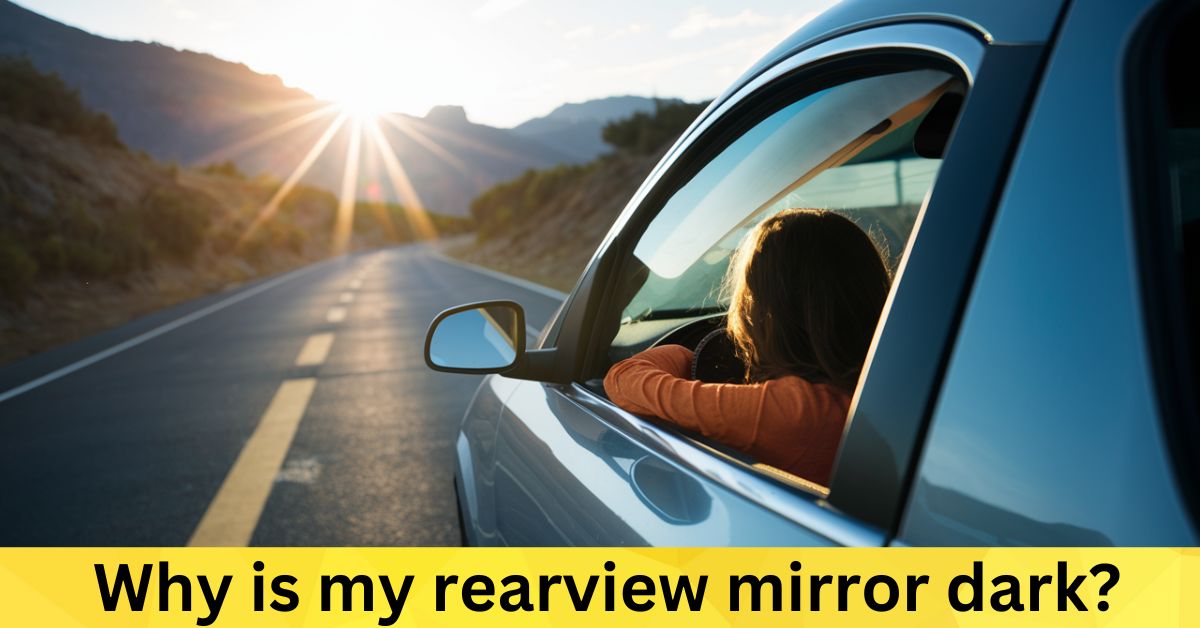Have you ever jumped into your car, ready to hit the open road, only to find yourself squinting at a surprisingly dark rearview mirror? You’re not alone in this puzzling experience. Many drivers across the USA have found themselves wondering, “Why is my rearview mirror dark?” Let’s embark on a journey to unravel this automotive enigma and shed some light on the situation.
Key Takeaways
Before we dive into the depths of this mirror mystery, here’s a quick snapshot of what we’ll cover:
- The science behind auto-dimming technology
- How tinting and sunlight play tricks on your mirror
- Night driving factors that can darken your view
- The role your car’s make and model plays in mirror darkness
- Practical tips to Brighten up your rearview
Common Causes of a Dark Rear View Mirror
Your rearview mirror might be playing hide and seek with you for several reasons. Let’s unmask the usual suspects:
- Auto-dimming feature: This high-tech helper might be working overtime.
- Tinted mirrors: A sun-blocking boon that can sometimes backfire.
- Dirt and grime: The silent visibility thieves.
- Sunlight exposure: Too much of a good thing can darken your outlook.
- Manufacturing quirks: Some cars just come with a darker perspective.
Understanding these factors is crucial in addressing the issue of a dark rearview mirror. Let’s explore each in more detail.
How Mirror Tinting Affects Visibility
Tinted mirrors are like sunglasses for your car – cool, but potentially problematic. Here’s the lowdown:
- Purpose: Reduces glare and UV rays, protecting your eyes and interior.
- Process: A thin film is applied to the glass surface.
- Darkness dilemma: Too much tint can leave you squinting at shadows.
While tinting can be beneficial, it’s a delicate balance. Overly tinted mirrors can significantly reduce visibility, especially during low-light conditions. It’s essential to ensure that your mirror tint complies with local regulations and doesn’t compromise your ability to see clearly.
“A little tint goes a long way. Too much, and you might as well be driving with your eyes closed!” – Anonymous car enthusiast
The Impact of Sunlight on Rear View Mirror Darkness
Sunlight and your mirror have a complex relationship. Here’s how Old Sol can throw shade on your rearview:
- Photochromic reactions: Some mirrors darken automatically in bright light.
- UV damage: Prolonged exposure can degrade mirror coatings.
- Temperature effects: Extreme heat can warp or discolor mirror materials.
To protect your mirror from solar shenanigans, consider these tips:
- Park in shaded areas when possible.
- Use a windshield sun shade to reduce interior heat.
- Apply UV-protective coatings to your mirrors.
Understanding the Role of Auto-Dimming Mirrors

Auto-dimming mirrors are like magic – they darken automatically to reduce glare. But how do they work their wizardry?
- Sensors detect bright light from trailing headlights.
- Electrical current passes through a gel layer.
- The gel darkens, reducing glare and eye strain.
While this technology is a boon for night driving, it can sometimes overreact, leaving you in the dark. Most auto-dimming mirrors have a sensitivity setting that you can adjust to find the perfect balance between glare reduction and visibility.
Factors That Contribute to a Darker Mirror at Night
Nighttime driving brings its own set of challenges to mirror visibility:
- Pupil dilation: Your eyes adjust to darkness, making the mirror seem darker.
- Headlight glare: Bright lights behind you can trigger auto-dimming features.
- Ambient light: Less surrounding light can make your mirror appear darker.
Remember, your eyes need time to adjust when transitioning from bright to dark environments. Give yourself a moment to acclimate before hitting the road at night.
The Connection Between Mirror Cleanliness and Darkness
A dirty mirror is like looking through a grimy window – everything seems darker. Here’s why cleanliness is key:
- Dust and fingerprints scatter light, reducing reflectivity.
- Road grime can create a film that darkens the mirror’s surface.
- Regular cleaning ensures optimal visibility and function.
Quick clean routine: Use a microfiber cloth and glass cleaner weekly for crystal-clear views. Here’s a simple cleaning schedule to maintain optimal visibility:
| Frequency | Action |
|---|---|
| Daily | Quick wipe with a dry microfiber cloth |
| Weekly | Thorough cleaning with glass cleaner |
| Monthly | Deep clean and check for damage |
How Different Car Models Vary in Mirror Darkness

Not all mirrors are created equal. Your car’s make and model can influence mirror darkness:
- Luxury vehicles often have more aggressive auto-dimming features.
- Sports cars might prioritize sleek, tinted mirrors over maximum visibility.
- Economy models typically have simpler, lighter mirrors.
Check your car’s manual or manufacturer specs to understand your mirror’s unique characteristics. For example, a BMW 7 Series might have a more sophisticated auto-dimming system than a Toyota Corolla, potentially leading to a darker mirror in certain conditions.
Tips for Improving Visibility in a Dark Rear View Mirror
Tired of peering into the abyss? Try these tricks to lighten things up:
- Adjust auto-dimming settings if your car allows it.
- Clean your mirror thoroughly and regularly.
- Check for damage or discoloration that might require replacement.
- Use auxiliary mirrors to supplement your main rear view.
- Consider aftermarket solutions like clip-on anti-glare devices.
Remember, a clear view behind you is crucial for safe driving. Don’t hesitate to address any visibility issues promptly.
Frequently Asked Questions
Q: How Does the Darkness of a Rear View Mirror Affect Driving Safety?
A dark mirror can significantly impact your driving safety:
- Reduced visibility of vehicles behind you
- Difficulty judging distances in low-light conditions
- Increased risk of accidents due to missed visual cues
Q: Can I Adjust the Darkness Level of My Rear View Mirror?
In many cases, yes! Here’s how:
- Manual mirrors: Flip the tab at the bottom to change the angle.
- Auto-dimming mirrors: Check your car’s settings menu for adjustability options.
- Aftermarket solutions: Consider anti-glare films or replacement mirrors.
Q: Does the Darkness of the Rear View Mirror Vary Depending on the Car’s Make and Model?
Absolutely! Different manufacturers have different approaches:
- Luxury brands often use more sophisticated (and darker) auto-dimming tech.
- Sports car makers might prioritize style over maximum visibility.
- Economy car producers typically opt for simpler, lighter mirror designs.
Q: Are There Any Long-Term Effects on the Mirror’s Darkness Due to Exposure to Sunlight?
Sun exposure can indeed have lasting effects:
- UV damage can degrade mirror coatings over time.
- Heat warping might affect the mirror’s shape or mounting.
- Discoloration of the glass or backing can occur with prolonged exposure.
Q: How Often Should I Clean My Rear View Mirror to Maintain Optimal Visibility?
Keep that mirror sparkling with this schedule:
- Weekly: Quick wipe-down with a microfiber cloth
- Monthly: Thorough cleaning with glass cleaner
- As needed: Spot-clean fingerprints and smudges
Conclusion
So, why is your rearview mirror dark? As we’ve discovered, it could be anything from high-tech features to a simple case of the dirties. By understanding the causes and implementing our tips, you’ll be back to crystal-clear rear views in no time.
Remember, a clear rearview mirror isn’t just about aesthetics – it’s a crucial safety feature. Keep it clean, check it regularly, and don’t hesitate to seek professional help if darkness persists.



